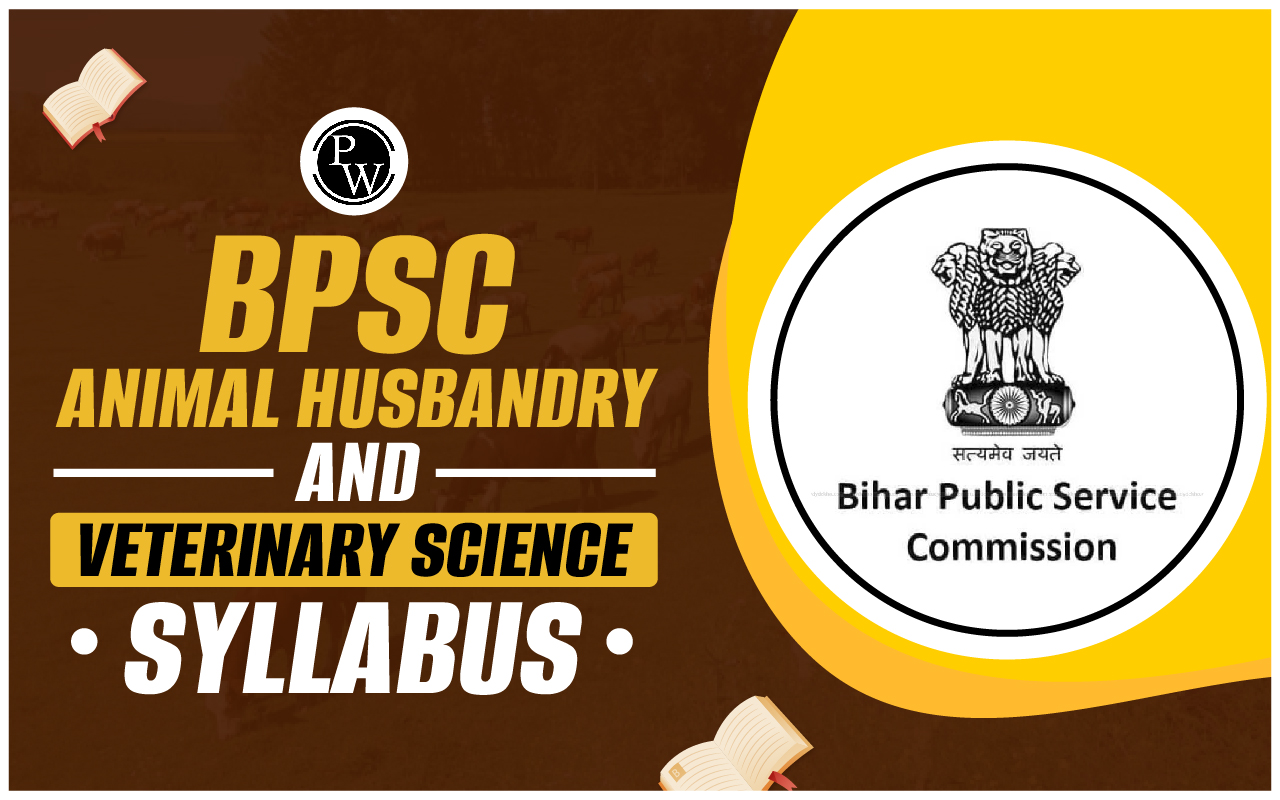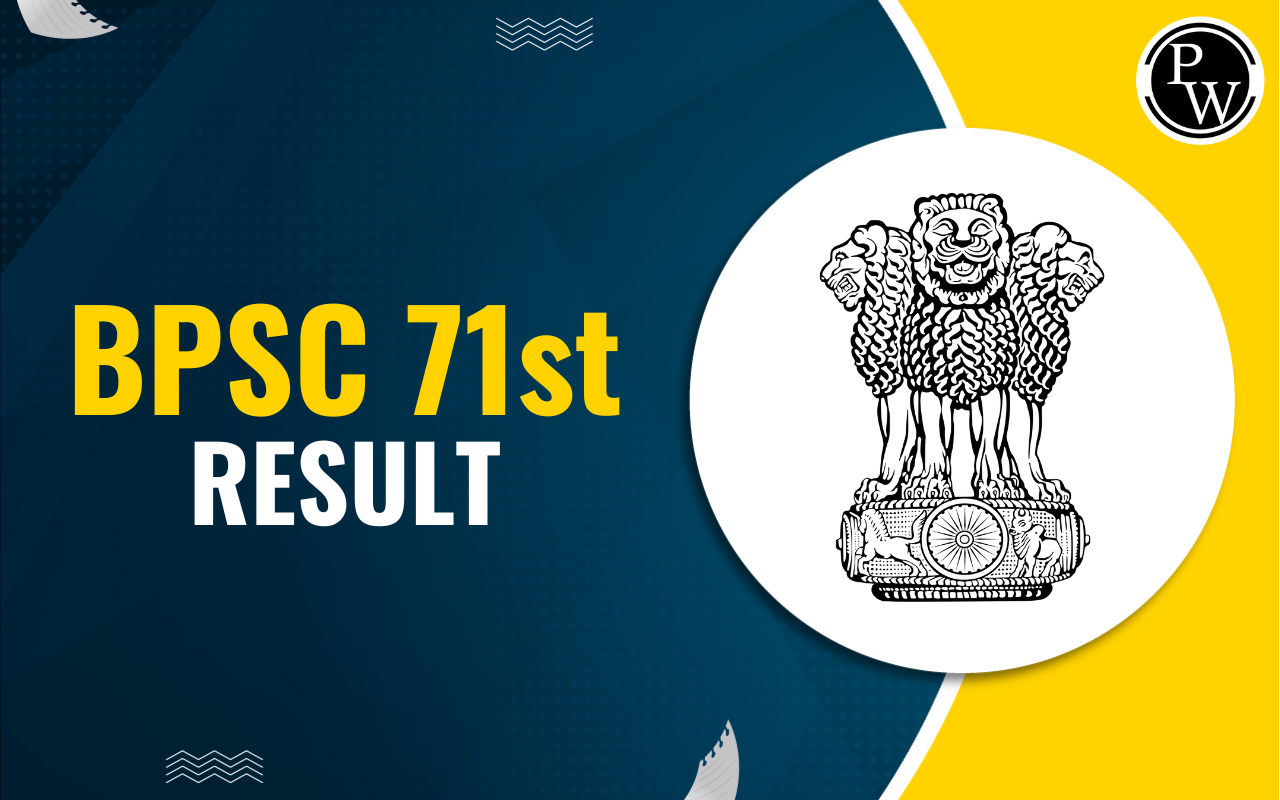

BPSC Animal Husbandry and Veterinary Science Syllabus 2025: The Bihar Public Service Commission has released the BPSC Animal Husbandry and Veterinary Science Syllabus 2025 for the candidates to prepare for the upcoming examination. The candidates who are going to appear in the BPSC 71st can go through the BPSC Syllabus 2025 for Animal Husbandry and Veterinary Science.
To meet the recruitment authority's cutoff, they must carefully review the syllabus and study. The preliminary exam, major exam, and interview are all part of the BPSC 2025 Selection Process. Candidates can find information on the section-by-section syllabus, the exam format, and preparation advice in this post.BPSC Animal Husbandry and Veterinary Science Syllabus 2025
The Bihar Public Service Commission has announced the BPSC Animal Husbandry and Veterinary Science Syllabus 2025. Each year, hundreds of applicants take the BPSC exam in hopes of being hired by the Bihar state government. General Hindi, General Studies 1 & 2, and Optional Subject are all covered in the syllabus. Each paper will last three hours, and the exam will be given for a total of 1000 marks. Sections I and II comprise the preliminary exam for the BPSC Animal Husbandry and Veterinary Science 2025. In order to properly prepare a study plan, students should read through this page to obtain details about the BPSC Syllabus and exam pattern.BPSC Animal Husbandry and Veterinary Science Syllabus 2025 Overview
The BPSC Animal Husbandry and Veterinary Science Syllabus for Sections I and II is available for review by candidates in the table below. The majority of the syllabus is devoted to general studies, covering subjects like the sources of energy, the metabolism of energy, and the needs for producing and maintaining milk, meat, eggs, and wool, Assessment of feeds as energy sources, Higher level research on nutrition protein: sources of protein, protein synthesis and metabolism, and protein quantity and quality with respect to needs, and Protein and energy ration in a ration.Below is an overview of the BPSC Animal Husbandry and Veterinary Science syllabus in a table format for easy understanding:
|
BPSC Animal Husbandry and Veterinary Science Syllabus 2025 Overview |
||
|---|---|---|
|
Syllabus Section |
Key Topics Covered |
Description |
|
Animal Nutrition & Metabolism |
Energy sources, metabolism, protein requirements, minerals, vitamins, feed additives |
Study of animal dietary needs and feed management |
|
Animal Physiology & Reproduction |
Physiology of body functions, reproductive anatomy, breeding techniques |
Understanding animal body functions and reproduction methods |
|
Genetics and Animal Breeding |
Principles of genetics, inheritance, breeding methods |
Genetic improvement and selective breeding of livestock |
|
Livestock Production & Management |
Dairy, poultry, meat production, housing, feeding, health management |
Practical aspects of managing livestock and production systems |
|
Animal Diseases & Veterinary Care |
Common diseases, diagnostics, treatment, zoonotic diseases, pharmacology |
Disease identification, treatment, and veterinary medicines |
|
Veterinary Public Health |
Hygiene, milk and meat product technology, environmental sanitation |
Ensuring public health through veterinary science practices |
|
Extension Education & Economics |
Rural extension methods, economics of animal husbandry, animal welfare |
Communication, economic aspects, and ethical treatment in animal husbandry |
BPSC Animal Husbandry and Veterinary Science Syllabus 2025 Section I
The table below contains the information for Section I of the BPSC Animal Husbandry and Veterinary Science Syllabus. The subjects and subtopics covered in this article will help applicants prepare well for the next test.| BPSC Animal Husbandry and Veterinary Science Syllabus | |
| Topics | Sub-Topics |
| Section I |
|
BPSC Animal Husbandry and Veterinary Science Syllabus 2025 Section II
The table below contains the information for Section II of the BPSC Animal Husbandry and Veterinary Science Syllabus. The subjects and subtopics covered in this article will help applicants prepare well for the next test.| BPSC Animal Husbandry and Veterinary Science Syllabus Section II | |
| Topics | Sub-Topics |
| Section 2 |
|
BPSC Animal Husbandry and Veterinary Science Exam Pattern 2025
The BPSC Animal Husbandry and Veterinary Science Exam Pattern 2025 along with the BPSC Animal Husbandry and Veterinary Science Syllabus is available for candidates to review, and it contains information about the format of the test, the amount of questions, the marking scheme for each subject, and how long it will take. General Hindi is a qualifying exam included in the BPSC Animal Husbandry and Veterinary Science Prelims Exam. The 900 marks in the mains are broken down into three categories: general studies, general Hindi, and an optional paper.| BPSC Animal Husbandry and Veterinary Science Exam Pattern 2025 | ||
| Subject | Total Marks | Time |
| General Hindi (Prelims) | 100 | 3 Hours |
| General Studies 1 | 300 | 3 Hours |
| General Studies 2 | 300 | 3 Hours |
| Optional Subject | 300 | 3 Hours |
| Total | 1000 | 3 Hours/Paper |
BPSC Animal Husbandry and Veterinary Science Preparation Tips
The candidates can go through the BPSC Animal Husbandry and Veterinary Science Preparation Tips which have been mentioned below. They can include these tips in their preparation strategies to prepare effectively for the upcoming BPSC Exam 2025.- Recognize the exam format and syllabus before anything else. For the best chance of receiving the most points, cover every subject listed in the syllabus. To ace the test, arm yourself with the greatest literature and reference materials.
- Make it a habit to write more quickly on the Animal Husbandry and Veterinary Science test. The applicants must write more quickly since they must provide lengthy responses that they must demonstrate with the aid of charts, diagrams, and pictures.
- The candidates should thoroughly complete all of the charts and diagrams because they improve the answer's readability and presentability and make it easier to understand. When needed, diagrams must be included in the exam.
- Use the previous year's question papers as a practice to improve your speed and lessen your exam anxiety.
| Other Related Links of BPSC Exam 2025 | |
| BPSC Notification | BPSC Salary |
| BPSC Selection Process | BPSC Syllabus |
| BPSC Previous Year Question Paper | BPSC Eligibility Criteria |
| BPSC Cut Off | |










